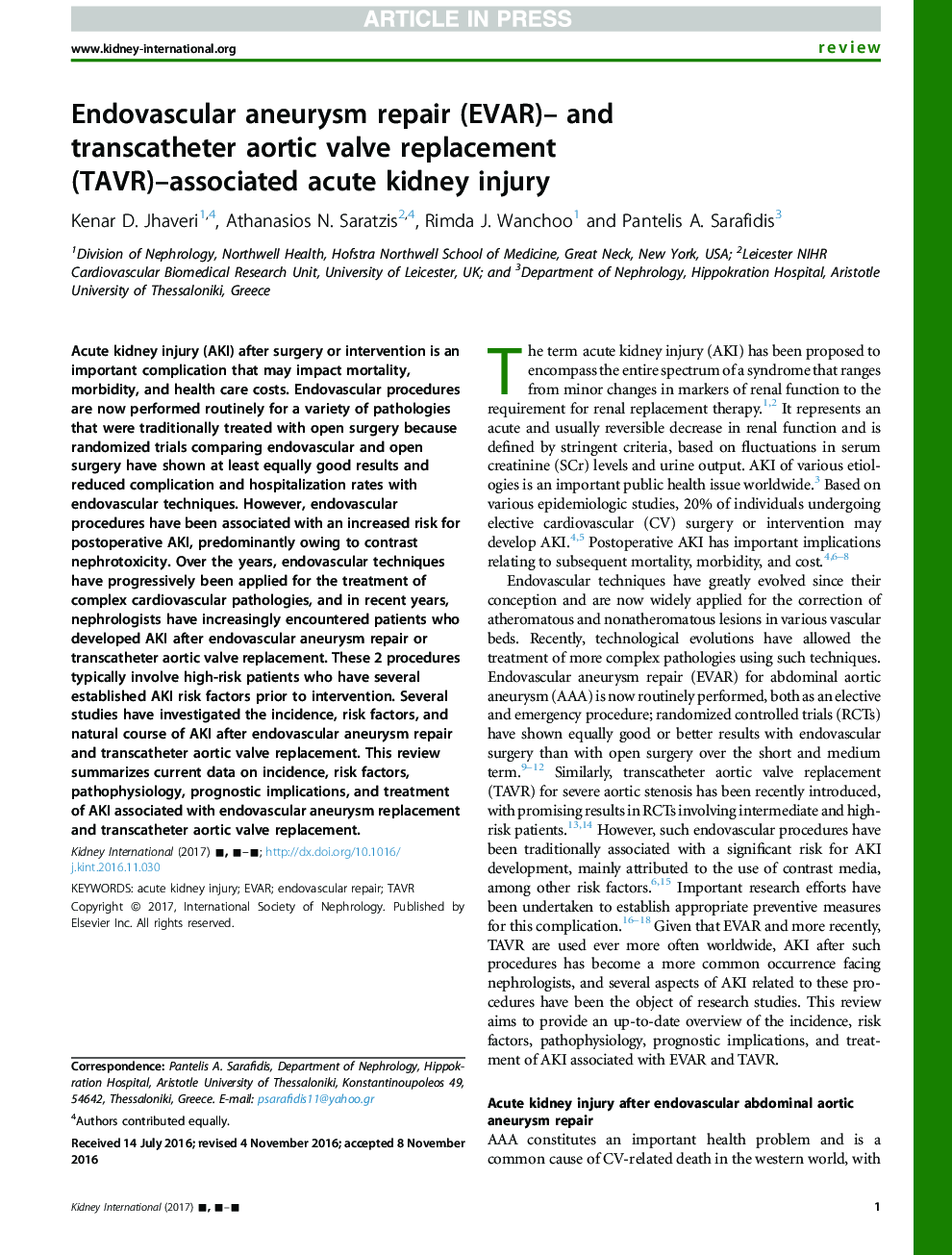| Article ID | Journal | Published Year | Pages | File Type |
|---|---|---|---|---|
| 5688289 | Kidney International | 2017 | 12 Pages |
Abstract
Acute kidney injury (AKI) after surgery or intervention is an important complication that may impact mortality, morbidity, and health care costs. Endovascular procedures are now performed routinely for a variety of pathologies that were traditionally treated with open surgery because randomized trials comparing endovascular and open surgery have shown at least equally good results and reduced complication and hospitalization rates with endovascular techniques. However, endovascular procedures have been associated with an increased risk for postoperative AKI, predominantly owing to contrast nephrotoxicity. Over the years, endovascular techniques have progressively been applied for the treatment of complex cardiovascular pathologies, and in recent years, nephrologists have increasingly encountered patients who developed AKI after endovascular aneurysm repair or transcatheter aortic valve replacement. These 2 procedures typically involve high-risk patients who have several established AKI risk factors prior to intervention. Several studies have investigated the incidence, risk factors, and natural course of AKI after endovascular aneurysm repair and transcatheter aortic valve replacement. This review summarizes current data on incidence, risk factors, pathophysiology, prognostic implications, and treatment of AKI associated with endovascular aneurysm replacement and transcatheter aortic valve replacement.
Related Topics
Health Sciences
Medicine and Dentistry
Nephrology
Authors
Kenar D. Jhaveri, Athanasios N. Saratzis, Rimda Wanchoo, Pantelis A. Sarafidis,
